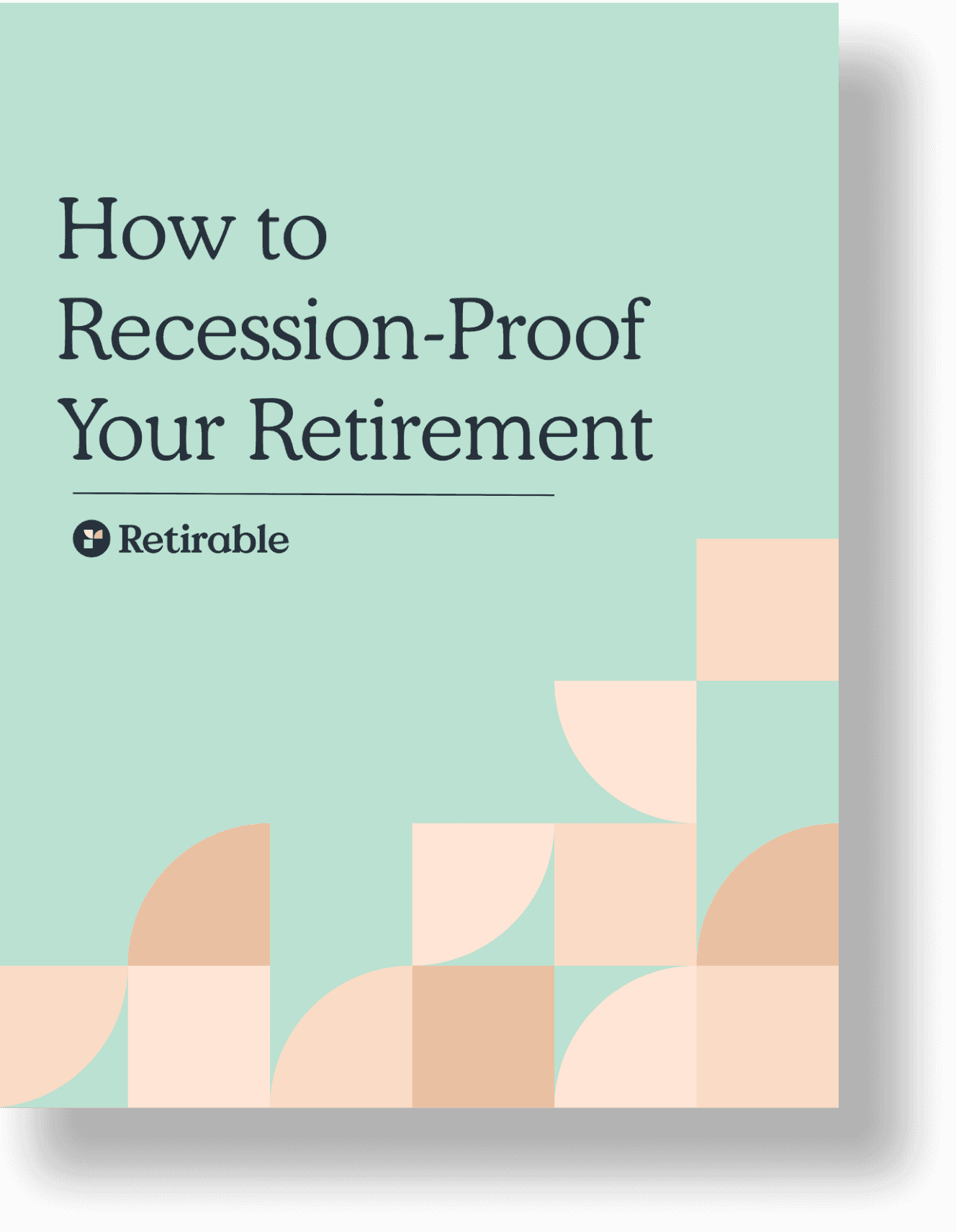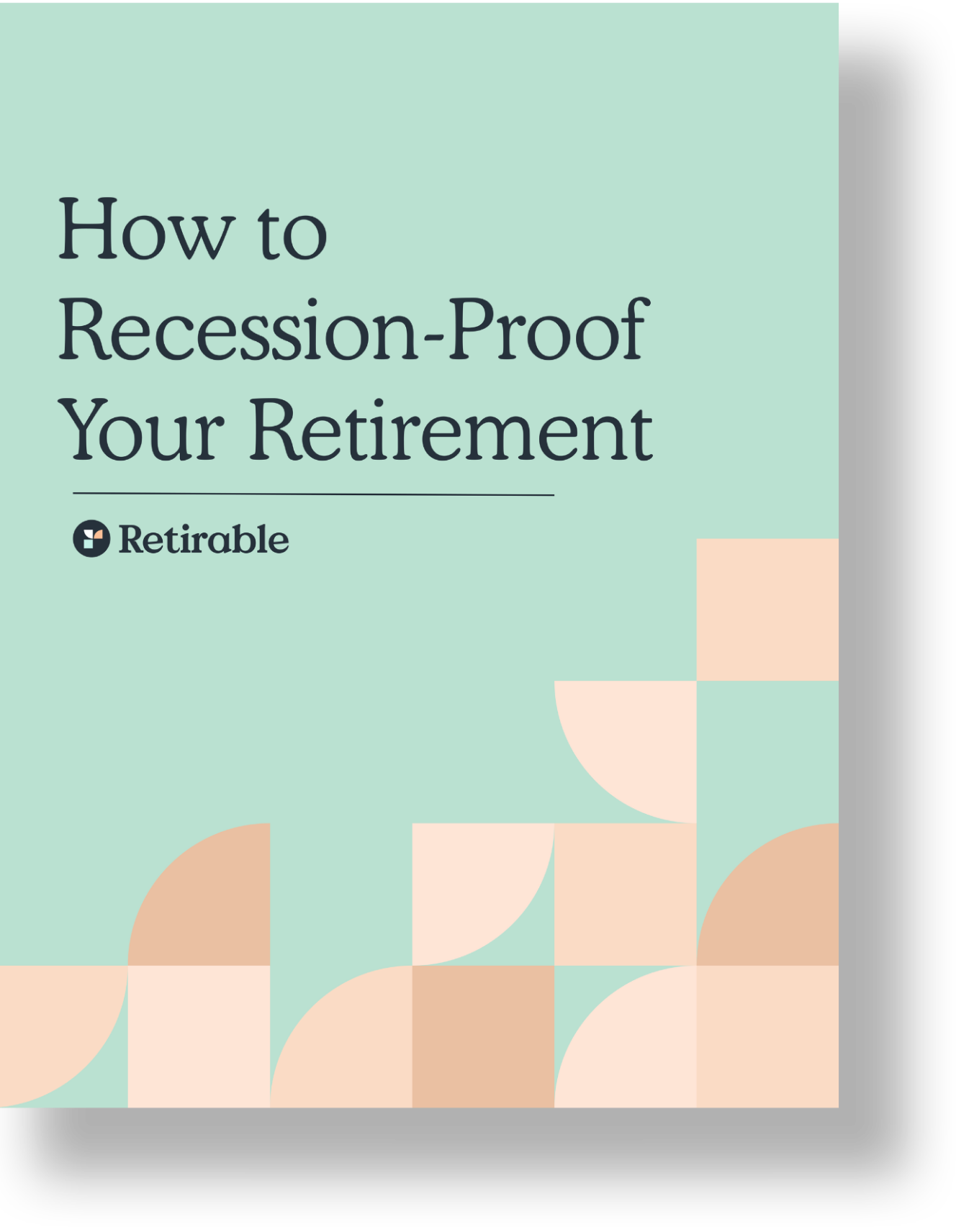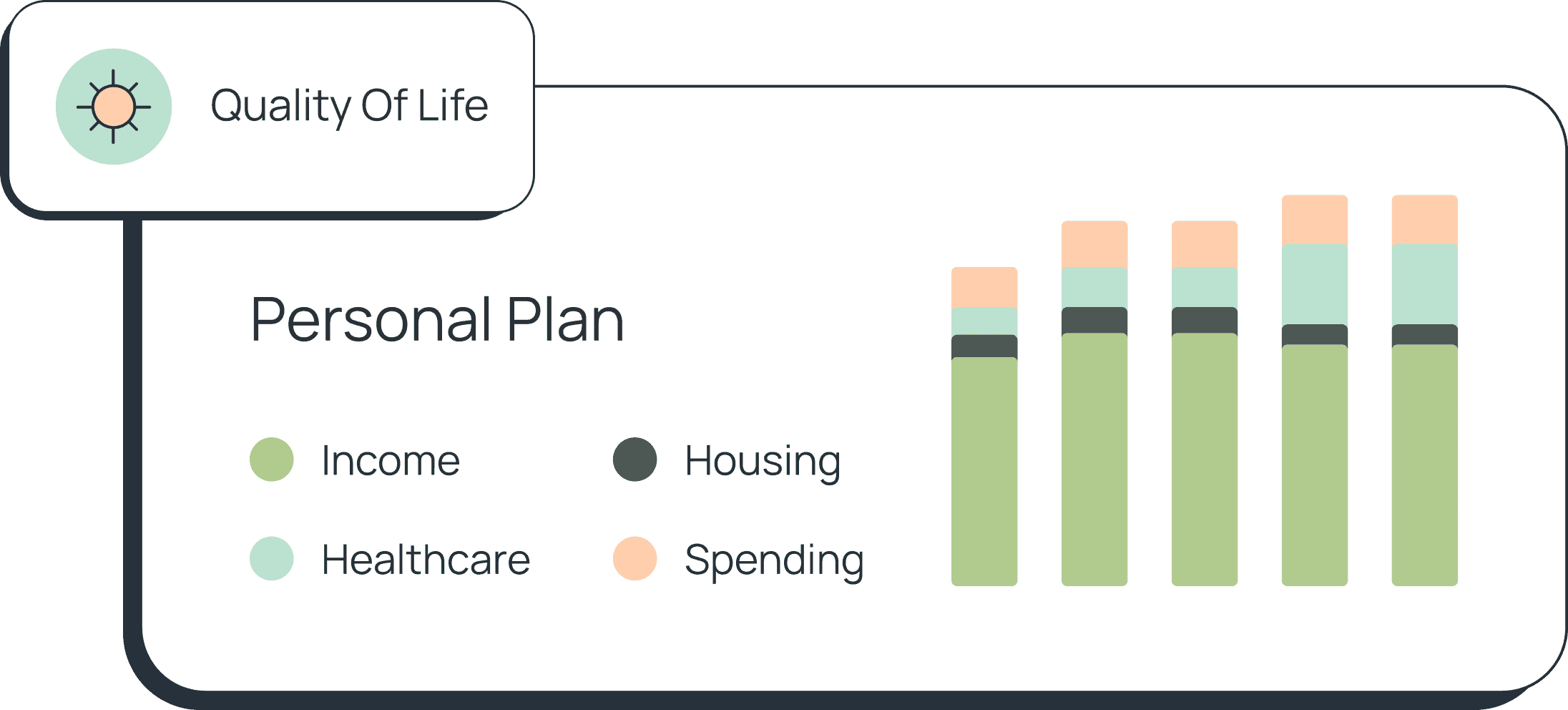Retirement Accounts
Traditionally, retirement savings accounts have been offered as a perk of employment. But you don’t have to rely on an employer to set money aside for later. An individual retirement account (IRA) can help you invest in an account designed specifically for funding your retirement.

R. Tyler End, CFP®
•
Published February 8th, 2024
•
Updated January 10th, 2025
Table of Contents
Key Takeaways
IRA stands for “individual retirement account.”
You can get an IRA from a variety of online and local brokers, as well as through robo-advisor apps.
With a Roth IRA, you put money in now, after already paying taxes on it, in exchange for tax-free distributions at retirement.
Employers traditionally offer retirement savings accounts as a perk. However, you don’t have to rely on an employer to set money aside for later. You can invest in an individual retirement account (IRA) designed to fund your retirement.
There are two types of IRAs: Traditional and Roth. Like a 401(k), a Traditional IRA allows you to contribute money before paying taxes. Conversely, with a Roth IRA, you contribute money after paying taxes. With a Roth IRA, you put the money in after you’ve paid taxes on it, allowing you to withdraw your investment during retirement tax-free. This is especially appealing if you expect to be in a higher income bracket during retirement and wish to plan ahead to prevent paying excessive income taxes.
According to research by the Investment Company Institute, only about 24% of US households contributed to a Roth IRA in 2022, despite it being a useful way to diversify your investment account vehicles and save on your tax bill when you might need it most: during retirement.
What is a Roth IRA?
A Roth IRA is a retirement savings account that allows your money to grow tax-free, with withdrawals in retirement also being tax-free, funded with after-tax dollars. Your contributions and earnings on your contributions can be withdrawn after you turn 59 ½, as long as your account has been open for at least five years.
Often when someone asks what is a Roth IRA, it’s in comparison to a Traditional 401(k) or a Traditional IRA. While it’s great to have retirement savings taken out of your check before your income is taxed, there’s a price to pay. When you retire, you’ll owe taxes on the money.
Roth IRA accounts are popular because they help ease the retirement tax burden. They lock in the certainty of taxes you will pay on this account because you’re paying those taxes now. You may be living on a limited income at retirement time, so the break in income taxes will be a relief.
Key Differences Between Roth IRAs and Traditional IRAs
The greatest difference between Roth IRAs and traditional IRAs are the tax implications. With Roth IRAs, you pay taxes on your contributions before retirement, which then eases the tax burden during retirement as your withdrawals are then not subject to taxes. With traditional IRAs, your contributions aren’t subject to taxation, but you should expect to pay taxes on them during retirement. If you anticipate being in a higher income bracket during retirement, a Roth IRA can save you money.
Other Key Differences
- Mandatory distributions: At age 73, you are required to take required minimum distributions (RMDs) from a traditional IRA. With a Roth IRA, there is no mandatory distribution requirement.
- Income requirements: Anyone 18 or older with earned income can contribute to a traditional IRA. To contribute to a Roth IRA, you must earn less than the IRS income limits in order to make the full annual contribution. In 2025, those limits are:
- Less than $150,000 if single
- Less than $236,000 if married filing jointly
| Feature | Roth IRA | Traditional IRA |
|---|---|---|
| Earnings | Grow tax-free | Grow tax-deferred, until withdrawn |
| Contributions | Made with after-tax dollars; are not tax-deductible | Made with pre-tax dollars; can be tax-deductible, depending on your income |
| Required minimum distributions (RMDs) | N/A; you are not required to withdraw money at a certain age | At age 73, you are required to take RMDs |
| Income requirements | Must be below the IRA income limits to make a full contribution | All incomes are allowed to contribute to a traditional IRA |
| Early withdrawal penalty | If you take a withdrawal before age 59 ½, you might have to pay taxes on your earnings, plus an additional 10% tax penalty | If you take a withdrawal before age 59 ½, you will have to pay taxes on your contributions and earnings. You may also incur a 10% tax penalty |
How Does a Roth IRA Work?
A Roth IRA works by collecting after-tax contributions from a qualifying source of earned income (i.e. your job) and investing it.
The source of your contributions is likely your job, but it might also be:
- Rollover funds from a Roth 401(k) plan
- A conversion from an existing traditional IRA or 401(k)
- A spousal contribution
- Other transfer
Over the years before retirement, your contributions can earn returns and those returns grow tax-free. When you’re ready to withdraw the funds during retirement, the withdrawals will also be tax-free (provided you follow the withdrawal rules) as you already paid the taxes when you funded the account.
Roth IRA withdrawal rules are as follows: you must be at least 59 ½ to withdraw the funds tax- and penalty-free, and your account must have been open for at least five years.
Who Can Contribute to a Roth IRA?
Unlike traditional IRAs, there are income limits to Roth IRAs. To contribute the full amount allowed annually, your modified gross income (MAGI) must be below $150,000 if you are a single filer, or below $236,000 if you are married and filing jointly.
If you earn below these income levels, the contribution limit in 2025 is $7,000 if you are under 50 and $8,000 if you are 50 and older.
If you earn more than these income levels, your contribution maximum will gradually lower, depending on your income bracket. Very high earners might be ineligible for any contribution.
| Filing Status | Modified Adjusted Gross Income (MAGI) | Contribution Limit (Under 50) | Contribution Limit (50 and Older) |
|---|---|---|---|
| Single | < $150,000 | $7,000 | $8,000 |
| ≥ $150,000 but < $165,000 | Partial contribution | Partial contribution | |
| ≥ $165,000 | Ineligible | Ineligible | |
| Married, filing jointly | < $236,000 | $7,000 | $8,000 |
| ≥ $236,000 but < $246,000 | Partial contribution | Partial contribution | |
| ≥ $246,000 | Ineligible | Ineligible | |
| Married, filing separately | < $10,000 | Partial contribution | Partial contribution |
| ≥ $10,000 | Ineligible | Ineligible |
2025 Roth IRA Income Limits
The 2025 Roth IRA income limit to make a full contribution is less than $150,000 (if you are a single filer) and less than $236,000 (if you are filing married and jointly). If you are a single filer, you will still be able to make contributions if your modified adjusted gross income (MAGI) is over $150,000, but it will not be the full $7,000. Once your MAGI is at or above $165,000, you will be ineligible to make any contributions. This rule applies to those who are filing jointly as a married couple, with contributions phased out after a couple’s MAGI is $246,000 or more.
If you are ineligible to contribute to a Roth IRA because your MAGI is too high, you might instead consider contributing to a traditional IRA to the full contribution limit.
2025 Roth IRA Contribution Limits
The maximum amount you can contribute is set by the IRS and changes almost every year. The amount is set based on cost-of-living and inflation; in both 2024 & 2025, the limit was $7,000 for those under 50 and $8,000 for those 50 and older.
While you can have multiple IRAs, including a mix of both traditional and Roth IRAs, the annual limit applies to all of your contributions. If you have already contributed $3,000 to one IRA this year, you can only contribute an additional $4,000 to your other IRAs, assuming you are under 50. If you are 50 or older, you would be allowed an extra $1,000.
Allowable Investments in a Roth IRA
Once you have made your contributions, your money can be invested in various ways. Roth IRA investments might include mutual funds, stocks, bonds, exchange-traded funds (ETFs), certificates of deposit (CDs), and money market funds.
While the IRS prevents contributions of cryptocurrency directly to a Roth IRA, there has been a rise in “Bitcoin IRAs” that allow people to invest in cryptocurrencies indirectly. Other prohibited investments include:
- Life insurance
- Derivative trades
- Antiques or collectibles
- Real estate for personal use
How to Open a Roth IRA
A Roth Individual Retirement Account (Roth IRA) is a powerful tool for retirement savings, offering tax-free growth and tax-free withdrawals in retirement. Unlike traditional IRAs, contributions to a Roth IRA are made with after-tax dollars, which means you pay taxes on the money before it goes into your account.
Here's how to open a Roth IRA and build a more secure financial future.
Step 1: Determine Your Eligibility Before opening a Roth IRA, ensure eligibility. Your ability to contribute to a Roth IRA depends on your income level. The IRS sets income limits that are updated annually, so check the current limits to see if you qualify. Generally, if you earn too much, you may be partially or entirely phased out from contributing.
Step 2: Choose Where to Open Your Roth IRA Roth IRAs can be opened with a variety of financial institutions, including banks, brokerage firms, and robo-advisors. When selecting a provider, consider factors such as:
- Fees: Look for low fees, including account fees, trading fees, and expense ratios on mutual funds or ETFs.
- Investment Options: Ensure a wide range of investment choices that align with your risk tolerance and investment goals.
- Ease of Use: Consider the platform's usability, customer service, and the availability of educational resources.
- Minimum Investment Requirements: Some providers require a minimum amount to open an account, while others do not.
Step 3: Gather Required Documents Be prepared to provide personal information and documentation, including:
- Social Security Number (SSN)
- Driver's license or other government-issued ID
- Employment information
- Bank account information for funding your account
Step 4: Fill Out the Application You can usually complete the application process online within a few minutes. You'll need to provide the information gathered in the previous step and make decisions about your account, such as naming beneficiaries.
Step 5: Fund Your Roth IRA Once your account is open, you need to fund it. You can do this by transferring money from your bank account, rolling over funds from another retirement account, or setting up a direct deposit. Decide how much you want to contribute, and remember that the IRS sets annual contribution limits.
Step 6: Choose Your Investments With your Roth IRA funded, it's time to choose how to invest your money. Your options might include stocks, bonds, mutual funds, ETFs, and more. If you're unsure where to start, consider speaking with a financial advisor or choosing a target-date fund, which automatically adjusts your asset allocation as you approach retirement.
Step 7: Set Up Regular Contributions Maximize your retirement savings by setting up regular contributions to your Roth IRA. Even small, consistent contributions can grow significantly over time thanks to compound interest. Try to contribute as much as you can up to the annual limit.
What are the Roth IRA Rules?
Every retirement vehicle has rules surrounding it that dictate when in your retirement you can withdraw your money, how much you can withdraw, the tax implications, and more. It's important to understand all the rules so you can decide which retirement account is best for you—remember, too, that you can hold multiple to diversify your investments.
2024 Roth IRA Withdrawal Rules
You can withdraw your earnings without owing taxes or becoming subject to penalties if you’re at least 59 ½ years old and it has been five years since you first contributed to your Roth IRA. This last part is known as the Five Year Rule.
Note, also, that if you take any of the money that is investment growth within the account, you’ll face penalties. In addition to the 5-year rule, you also can’t take the funds out without penalty until you’re aged 59½ unless you have a disability.
There is a special early withdrawal exception to know about. If you are a first-time homebuyer, the IRS allows you to withdraw up to $10,000 from your Roth IRA without penalty to buy, build, or rebuild a home. You have 120 days to use the money for this purpose. You can avoid taxes on the withdrawal if you meet the five-year rule.
2024 Roth IRA Withdrawal Penalty
If you break the withdrawal rules, and you are not withdrawing the money for an allowable exception such as a home purchase, you could be subject to income tax as well as a 10% tax penalty.
2024 Roth IRA Tax Benefits
While contributions to a traditional IRA are sometimes tax-deductible, a Roth IRA has no upfront tax break. You will not receive a tax deduction for your contributions to this account. The upside, however, is that your investments grow tax-free and can be withdrawn tax-free during retirement, offering significant savings if you anticipate your income being higher during retirement.
How to Withdraw from a Roth IRA
So long as you are over 59 ½ and you have had your Roth account for five or more years, you can take tax-free withdrawals of both contributions and earnings any time. There is no required minimum distribution rule on Roth IRAs, so you can choose to hang on to the investments as long as you wish.
When you do decide to withdraw funds, contact your financial institution (online or by phone) to initiate the process. Usually, the institution can transfer money to you via EFT, bank wire, paper check, or via a transfer to another account within the same institution.
Are Roth IRAs Insured?
The Federal Deposit Insurance Corporation (FDIC) insures accounts at participating banks for up to $250,000 per depositor per account. This protection extends to IRAs and not 401(k)s, as long as the broker or bank you’ve chosen is FDIC-insured. Look for this branding either on the broker’s website or on a sticker in the window at a brick-and-mortar location.
But with any bank account, it’s important to pay close attention to that $250,000 limit. Your coverage is limited to $250,000 per depositor per location, so if your Roth account is nearing that limit, it might be time to diversify those funds across account types or financial institutions.
Final Thoughts
If you want to know whether a Roth IRA makes sense for you, it’s important to understand the tax benefits and underlying rules for the account. If your employer offers a 401(k), you may want to weigh the tax-deferred features and any available employer matching of contributions against paying taxes on your Roth IRA contributions now for tax-free distributions later. We recommend working with a Certified Financial Planner® to best evaluate your individual circumstances and find the best retirement savings options for you.
Frequently Asked Questions
What is a Roth IRA?
A Roth IRA is a type of individual retirement account where contributions are made with after-tax dollars, allowing for tax-free withdrawals in retirement. This can offer a significant tax advantage, especially for those who expect to be in a higher tax bracket in the future.
What is a Spousal Roth IRA?
A spousal IRA is one that allows one spouse to contribute to another spouse’s account. To qualify, the couple must be married and filing taxes jointly. These accounts are typically opened so a working spouse can contribute to an IRA owned by a non-working spouse.
Both spouses may contribute up to the IRS annual limit, but a spousal IRA has just one legal account holder; the person whose name the account is under owns the money inside, no matter where the contributions are from.
Are Roth IRAs insured?
If your Roth IRA is held with an FDIC-insured depository bank or financial institution, and your account holds qualified depository assets, it is insured by the FDIC. If some of your holdings are held with a non-depository institution or are invested in securities and other non-banking assets, they will not be insured by the FDIC. Examples of assets that are considered speculative, and therefore not insurable, include stocks, bonds, annuities, ETFs, and mutual funds.
Can you lose money in a Roth IRA?
A Roth IRA is an investment with risks, like any other. Anyone can lose money in their Roth IRA, which could be caused by market downturns, poor investments, and early withdrawals. To create a strong portfolio, diversify your investments across several different retirement accounts and vehicles.
Is it better to invest in a Roth IRA or a 401(k)?
Both types of accounts offer excellent tax-advantaged savings options. If you have the funds, consider contributing to both accounts. Many employers offer 401(k) accounts with matching contributions, so it’s a no-brainer to open these accounts and take advantage of the employer offer—it’s basically free money, after all!
How do you open and fund a Roth IRA?
You can open a Roth IRA through various platforms, including local and online brokers, as well as robo-advisors. Funding the account typically involves transferring money electronically from your bank, using your bank’s routing number and your account number.
What are the eligibility requirements and contribution limits for a Roth IRA?
Eligibility to contribute to a Roth IRA is subject to income limits set by the IRS, which may change annually. For 2024, the contribution limit is $7,000 for those under 50 and $8,000 if you're age 50 or older. Contributions can only be made with earned income, which includes wages, salaries, commissions, and self-employment income.
Share this advice

Tyler is a Certified Financial Planner® and CEO & Co-Founder at Retirable, the retirement peace of mind platform. Tyler has nearly 15 years of experience at leading companies in the wealth management and insurance industries. Before Retirable, Tyler worked as Head of Operations Expansion at PolicyGenius, expanding the company’s reach into new products — turning PolicyGenius into an industry-leading disability and P&C insurance distributor. Before working at PolicyGenius, Tyler worked as Wealth Management Advisor at prominent financial services organizations.
As an advisor, Tyler played an integral role in helping clients define goals, achieve financial independence and retire with peace of mind. Through this work, Tyler has helped hundreds of thousands of people get the financial planning and insurance advice they need to succeed. Since founding Retirable, Tyler’s innovative approach to retirement planning has been featured in publications such as Forbes, Fortune, U.S. News & World Report, and more.
Understanding 401(k)s
401(k) Rules
Cashing Out your 401(k)
Understanding Roth 401(k)s
Roth IRA Basics
Share this advice

Tyler is a Certified Financial Planner® and CEO & Co-Founder at Retirable, the retirement peace of mind platform. Tyler has nearly 15 years of experience at leading companies in the wealth management and insurance industries. Before Retirable, Tyler worked as Head of Operations Expansion at PolicyGenius, expanding the company’s reach into new products — turning PolicyGenius into an industry-leading disability and P&C insurance distributor. Before working at PolicyGenius, Tyler worked as Wealth Management Advisor at prominent financial services organizations.
As an advisor, Tyler played an integral role in helping clients define goals, achieve financial independence and retire with peace of mind. Through this work, Tyler has helped hundreds of thousands of people get the financial planning and insurance advice they need to succeed. Since founding Retirable, Tyler’s innovative approach to retirement planning has been featured in publications such as Forbes, Fortune, U.S. News & World Report, and more.






